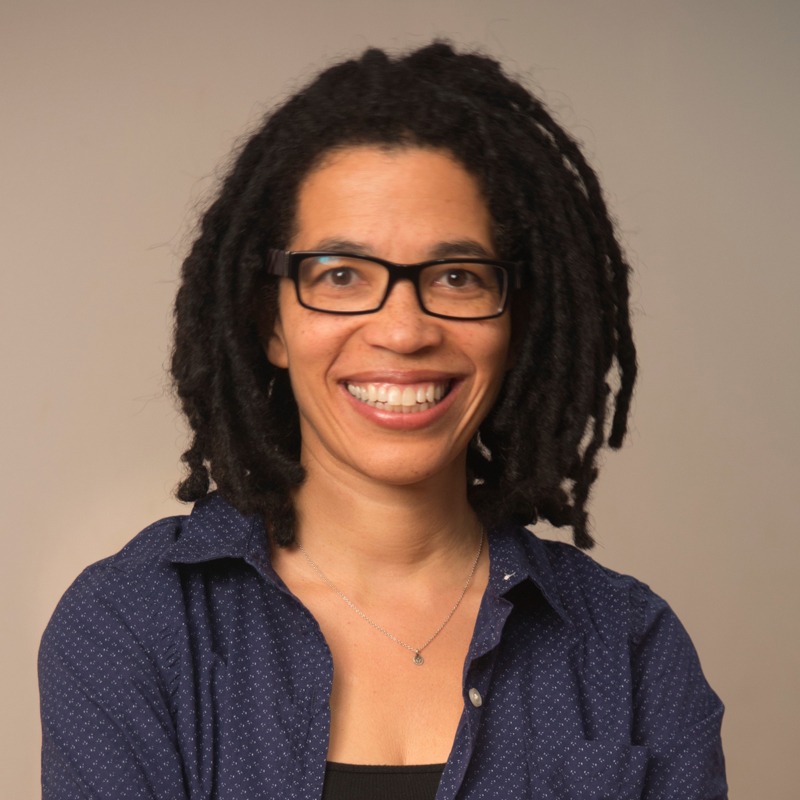Playwright Tanya Barfield is a recipient of the Lilly Award, the Helen Merrill Award, and was nominated for a Pulitzer Prize for her play Blue Door. Other plays include The Call (Playwright’s Horizons, New York Times Critics Pick) and, of course, Bright Half Life (Women’s Project Theater, TimeOut Critic’s Pick). She has written for the Starz series The One Percent and The Americans on FX. Tanya has also taught playwriting (NYU, Barnard, ESPA and private classes) and worked as a literary manager for Juillard. As we prepare our reading of Bright Half Life we asked her about that play.
1) What inspired you to write Bright Half Life?
I write about people in a state of emotional crisis — people that teeter on the edge of discovery. Bright Half Life is about marriage. It begins when Erica contemplates the notion of soulmates and proposes to her ex-girlfriend Vicky. I wanted to write a romantic play. I’d never done that before. At the same time, I didn’t want to bore myself in the process. So, I wrote a mixed up love story about the highs and lows of a long term relationship. When I first began the play, I didn’t realize that I was actually writing the play because many of the scenes are quite short – like flashes of memory. (I constantly lecture my students to write longer scenes. “Don’t write plays as if you’ve written them on Twitter,” I say). But, slowly, like developing old film, the play begin to emerge. The play it contains over well over 50 short scenes, none of them exceeding ten pages
2) The play is non-linear in structure, can you explain why you chose to write the story in this way?
The biggest challenge in writing Bright Half Life has offered a creative opportunity: how do I structure a satisfying dramatic arc with a nonlinear narrative? How do I calibrate momentum through a series of short scenes? Although it unfolds out of sequence, the play follows a traditional structure in terms dramatic tension and rising action. The penultimate moment of Bright Half Life is chronologically the inciting incident – but it is also the climax. We see the catalyst for the entire play just before the story ends. This structure provides a very active experience for the audience as they constantly have to orient themselves in time and place.
3) In the script, you specify that the character of Erica is a “soft butch and should be played as a caucasian woman” and that Vicky “appears more traditionally feminine. An African-American, Latina or Asian actress may play her.” You write alternative lines for if Vicky is Latina or Asian as opposed to African-American. Given this, I’m wondering if you could comment on both the specificity and the universality of the characters’ identities and story.
I intentionally wrote Vicky as an African-American woman. Yet, unlike most of my other plays, Bright Half Life is not specifically about race. The play touches on racial identity, but this theme is seen only in the context of what it means to be in an interracial relationship, as opposed to what it means to be a Black woman. Perhaps this is why the character of Vicky resonates with women from various cultural backgrounds. When I was preparing the play for publishing, a small theater approached me, asking permission to cast a light-skinned Latina actress in the role of Vicky. The theater explained that this actress discovered the play, brought it to the theater and passionately identified with Vicky as a character. Around the same time, an Asian-American coworker told me she had brought a group of her friends to the play and said her Asian-American friends related to Vicky, and despite the character’s differences (these women were all straight), Vicky’s story was their story.
These two incidents occurred in the same month and that confluence led me to think about what it would mean to cast other non-Black actresses of color in the role. While I was initially hesitant—I didn’t want Vicky to be seen as an all-purpose “other”—I couldn’t ignore the fact that women from very different backgrounds related to Vicky. Although I normally think of race as being very specific to character, in the case of Bright Half Life, the protagonist is the relationship, not the characters. And this relationship story is an interracial one. If women from multiple backgrounds are able to breathe life into it, that’s what is most important to me.
WAM’s Fresh Takes Play Reading of Bright Half Life will be performed live at MASS MoCA in North Adams on Sunday June 5 at 2pm and streamed on line on Sunday June 5 at 7:30pm. Tickets and more information can be found here.

